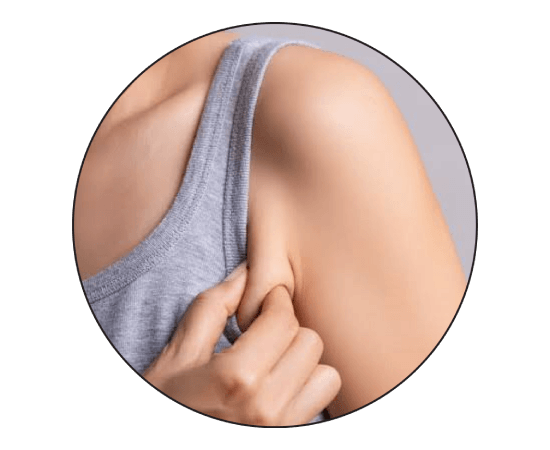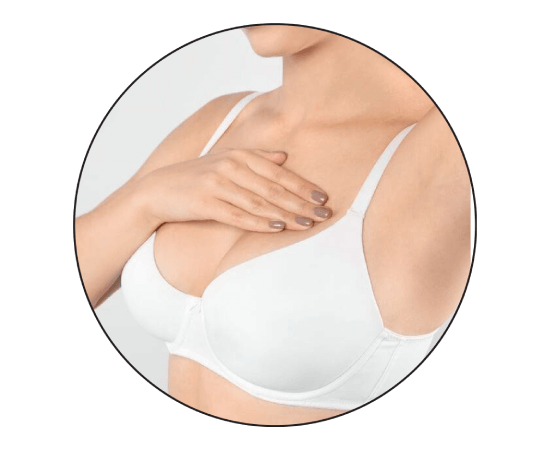What is a Laser mole removal treatment and how is it performed?
A mole is a common skin growth that can appear anywhere on the body. Moles are usually brown or black in color and can be raised or flat. Most moles are harmless, but some may become cancerous over time and require removal. People may want to remove a mole for cosmetic reasons if it is in a visible or prominent location, or if it is large, irregular, or bothersome. Moles can also be removed if they are causing discomfort or irritation, such as rubbing against clothing or getting caught during shaving. In some cases, a mole may be removed as a precautionary measure if it shows signs of being atypical or potentially cancerous. Ultimately, the decision to remove a mole should be made in consultation with a dermatologist or healthcare provider.
What are various kinds of moles?
There are several types of moles that can appear on the skin, including:
- Congenital moles: These are moles that are present at birth and are usually larger and darker than other types of moles.
- Acquired moles: These are moles that develop after birth and are the most common type of mole.
- Dysplastic moles: These moles are irregularly shaped, larger than average, and may have different shades of color. They may also be hereditary and have a higher risk of developing skin cancer.
- Halo moles: These are moles that are surrounded by a ring of depigmentation or a “halo.” The cause of halo moles is not fully understood, but they are usually benign.
- Blue moles: These moles have a blue or bluish-gray color and are caused by pigment being deeper in the skin. They are usually benign but may be a sign of deeper skin cancer.
- It’s important to have any new or changing moles checked by a dermatologist to determine if they require further evaluation or treatment.
What are the causes of moles on the skin?
- Moles are caused by the accumulation of pigment-producing cells (melanocytes) in the skin. These cells are responsible for producing melanin, which gives skin its color. Moles can develop anywhere on the body and may appear at any age, although most moles develop during childhood or adolescence.
- The exact cause of moles is not fully understood, but it is believed to be a combination of genetic and environmental factors. Research has shown that individuals with fair skin, red or blonde hair, and a family history of moles or skin cancer may be at a higher risk of developing moles.
- Exposure to ultraviolet (UV) radiation from the sun or tanning beds can also increase the number and size of moles. It’s important to protect the skin from UV radiation by wearing protective clothing, using sunscreen, and avoiding excessive sun exposure, particularly during peak hours of 10 a.m. to 4 p.m.
What is the process of Laser mole removal treatment at the Dezire clinic?
- You should consult our medical counselor beforehand to discuss your condition and expectation.Laser mole removal is a non-invasive procedure that involves using a laser to break down and destroy the cells that make up the mole. The procedure is typically performed by a dermatologist or a trained medical professional in an outpatient setting.
- The procedure begins with the application of a local anesthetic to numb the area surrounding the mole.
- The laser is then directed at the mole, emitting pulses of light that break down the pigment cells in the mole. The laser also seals the surrounding blood vessels to minimize bleeding and prevent infection.
- Depending on the size and depth of the mole, multiple treatments may be necessary to completely remove it. After the procedure, the treated area will be covered with a sterile dressing and the patient will be given instructions on how to care for the site as it heals.
What precautions are necessary after laser mole removal?
After laser mole removal, it’s important to follow the aftercare instructions provided by your healthcare provider to ensure proper healing and reduce the risk of complications. Some general precautions include:
- Keep the treated area clean and dry for at least 24 hours after the procedure.
- Avoid touching or rubbing the treated area.
- Apply an antibiotic ointment or cream to the treated area as directed by your healthcare provider.
- Avoid direct sun exposure to the treated area for at least two weeks after the procedure. Use sunscreen with at least SPF 30 and wear protective clothing, such as a hat and long-sleeved shirt.
- Avoid strenuous exercise or activities that may cause sweating for at least 24 hours after the procedure.
- Avoid using makeup or other cosmetic products on the treated area until it has fully healed.
- Keep all follow-up appointments with your healthcare provider to monitor the healing process and ensure that the mole has been completely removed.
- If you experience any signs of infection, such as redness, swelling, or discharge from the treated area, contact your healthcare provider immediately.
Why Dezire clinic is the best clinic for your mole removal procedure?
Looking for cosmetic treatment in Delhi, Dezire clinic has been in the field of cosmetic and surgical procedures for years now. We use the latest technology available in the market to give you high-class services. Dezire is known for maintaining an impeccable level of hygiene for a safe experience for our clients. We maintain confidentiality in our work to ensure that you will have a comfortable experience with us. You can call us at 9717470550 or you can email us at (dezireclinicindia@gmail.com) to book your free consultation.











